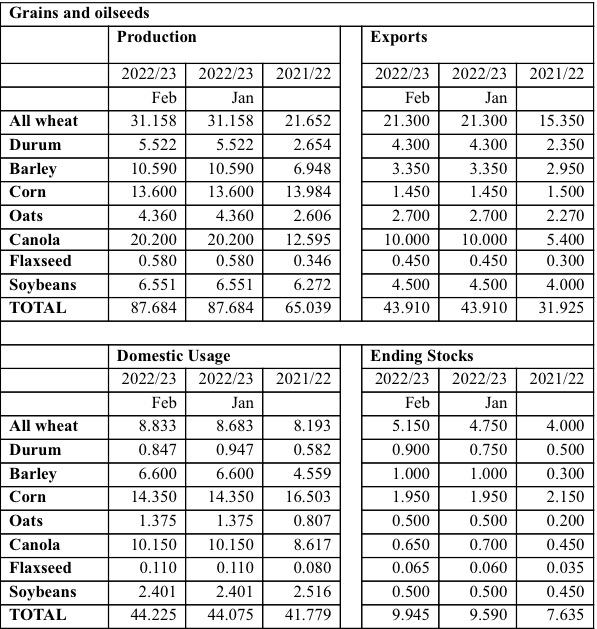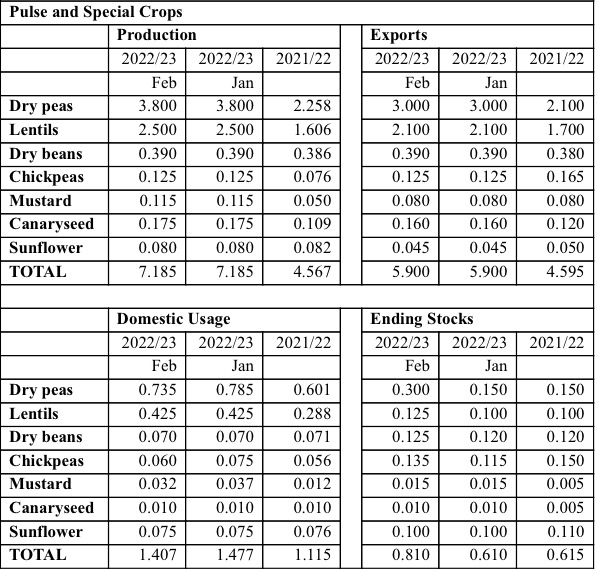MarketsFarm — Only minor adjustments to the old- and new-crop balance sheets were reported by Agriculture and Agri-Food Canada in their February supply/demand report, released Friday.
New-crop production estimates were left unchanged for all of the major grains, oilseeds and pulses, with a return to average yields across the Prairies expected to lead to increased production after the 2021-22 drought.
Projected canola ending stocks for both the current marketing year and 2022-23 were lowered by 50,000 tonnes, to 450,000 and 650,000 tonnes respectively. Wheat ending stocks for both crop years were raised, primarily due to a million-tonne reduction in 2021-22 export projections.
Read Also

Record large Canadian wheat and canola crops: Statistics Canada
Canadian wheat and canola production in 2025/26 (Aug/Jul) surpassed early expectations to hit new record highs, according to updated survey-based estimates from Statistics Canada released Dec. 4.
Total wheat exports for the current marketing year were pegged at 15.35 million tonnes, which compares with the January forecast of 16.35 million. Canadian wheat exports in 2022-23 are forecast at 21.3 million tonnes.
Total wheat ending stocks are now forecast at four million tonnes for 2021-22 and 5.15 million in 2022-23.
Ending stocks for peas and lentils are forecast to be slightly larger than earlier expectations in both the current marketing year and 2022-23.
Tables: February estimates for Canadian major crops’ supply and demand, in millions of metric tonnes. Source: Agriculture and Agri-Food Canada.

















